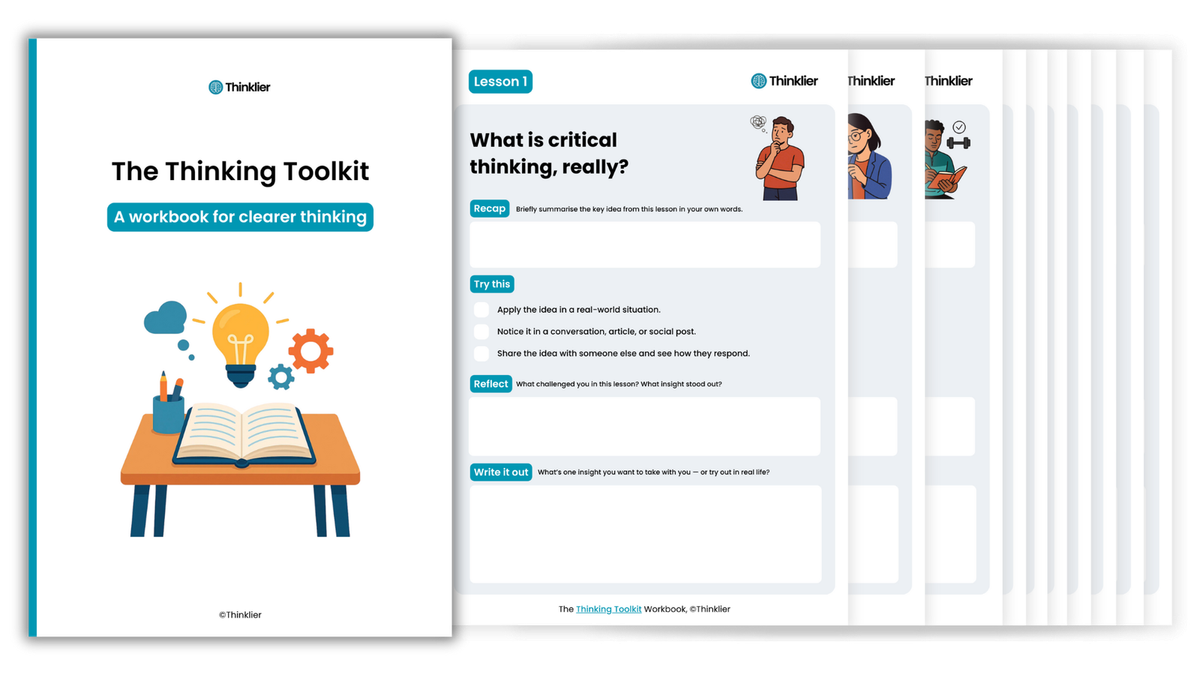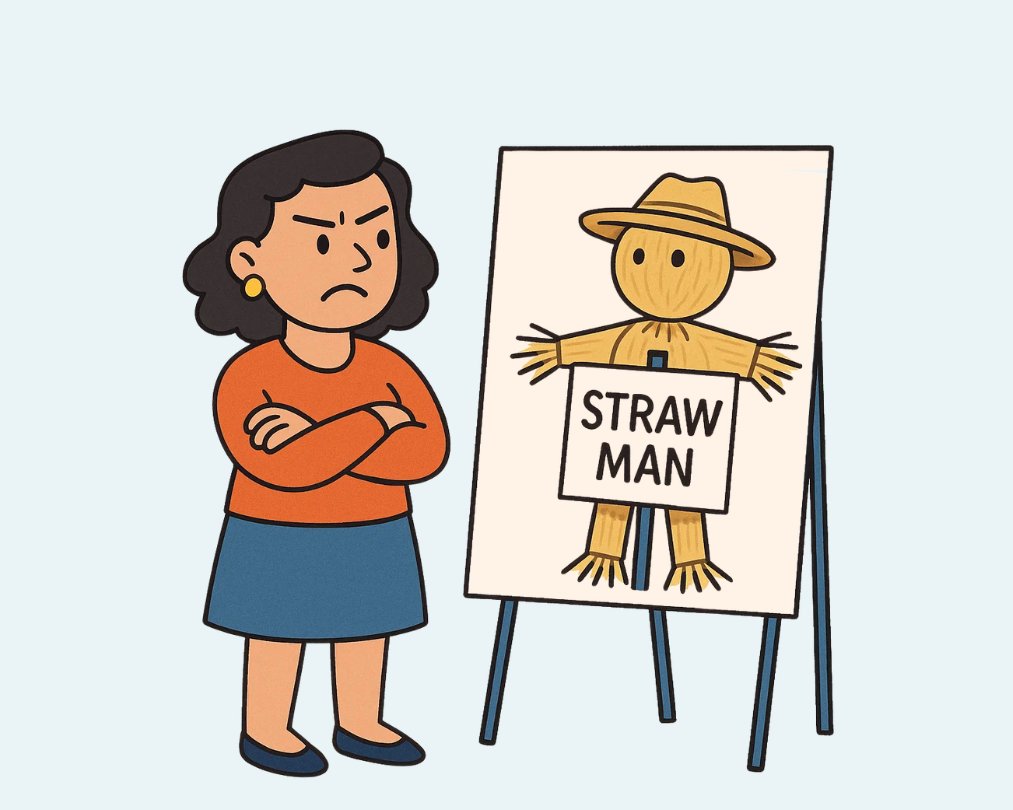Lesson 3: Fallacies: the shortcuts that fool us
From The Thinking Toolkit
Fallacies feel persuasive, but they lead us astray. This lesson helps you spot the most common reasoning errors — and avoid falling for them.
Imagine someone saying,
“You can’t trust what she says — she’s a vegan.”
or
“If we let people wear headphones at work, next they’ll want to work from home in pyjamas!”
These might sound persuasive. They might even win arguments. But they’re not good thinking. They’re fallacies — mental shortcuts dressed up as logic.
And they’re everywhere.
What is a fallacy?
A fallacy is a flawed argument that sounds convincing but falls apart under scrutiny.
It’s the illusion of reasoning — a trick of rhetoric, bias, or lazy logic.
Some fallacies are emotional. Some are sneaky. Some are just sloppy.
But they all have one thing in common: they let us feel right without actually being right.
Why we fall for them
We like speed, certainty and simplicity. Fallacies give us all three, without the discomfort of deep reflection.
They also help us win. In debates, online spats, or even casual disagreements, fallacies are the mental equivalent of cheap shots: fast, effective, and often unchecked.
But thinking clearly means catching them in others and ourselves.
Three common fallacies to watch for
There are dozens of fallacies, but here are three you’ll spot today if you’re looking:
1. Straw man
Misrepresenting someone’s argument to make it easier to attack.
“You think we should regulate junk food? So you want the government to control everything we eat?”
2. Ad hominem
Attacking the person, not their idea.
“Of course he’d say that — he’s just a rich tech bro.”
3. Slippery slope
Claiming that one small step will lead to an extreme result, without evidence.
“If we let students use calculators, they’ll never learn to think for themselves.”
Why it matters
Fallacies don’t just damage arguments — they damage understanding.
They shortcut nuance and flatten complexity. And when used repeatedly, they corrode trust and turn thinking into tribalism.
Spotting them is the first step. Calling them out — kindly, clearly — is the second.
Mini challenge: spot the fallacy
Look at your social feed, a news article, or even a conversation today.
Can you spot a fallacy in action?
- Is someone attacking the person instead of the point?
- Are they twisting an argument into a cartoon version of itself?
- Is there a scary “what if” being used as a substitute for evidence?
Pick one, name it, and write down why it’s misleading.
In short
Fallacies are mental shortcuts that sound smart but break down under scrutiny.
Whether it’s attacking the person instead of the point, exaggerating an argument, or leaping to worst-case scenarios, fallacies flatten thinking and derail understanding.
Clear thinking means catching them, not just in others, but in yourself.
Don’t forget the companion workbook
To get the most out of this lesson, download the workbook — it gives you space to reflect and one simple habit to build.

Next up







